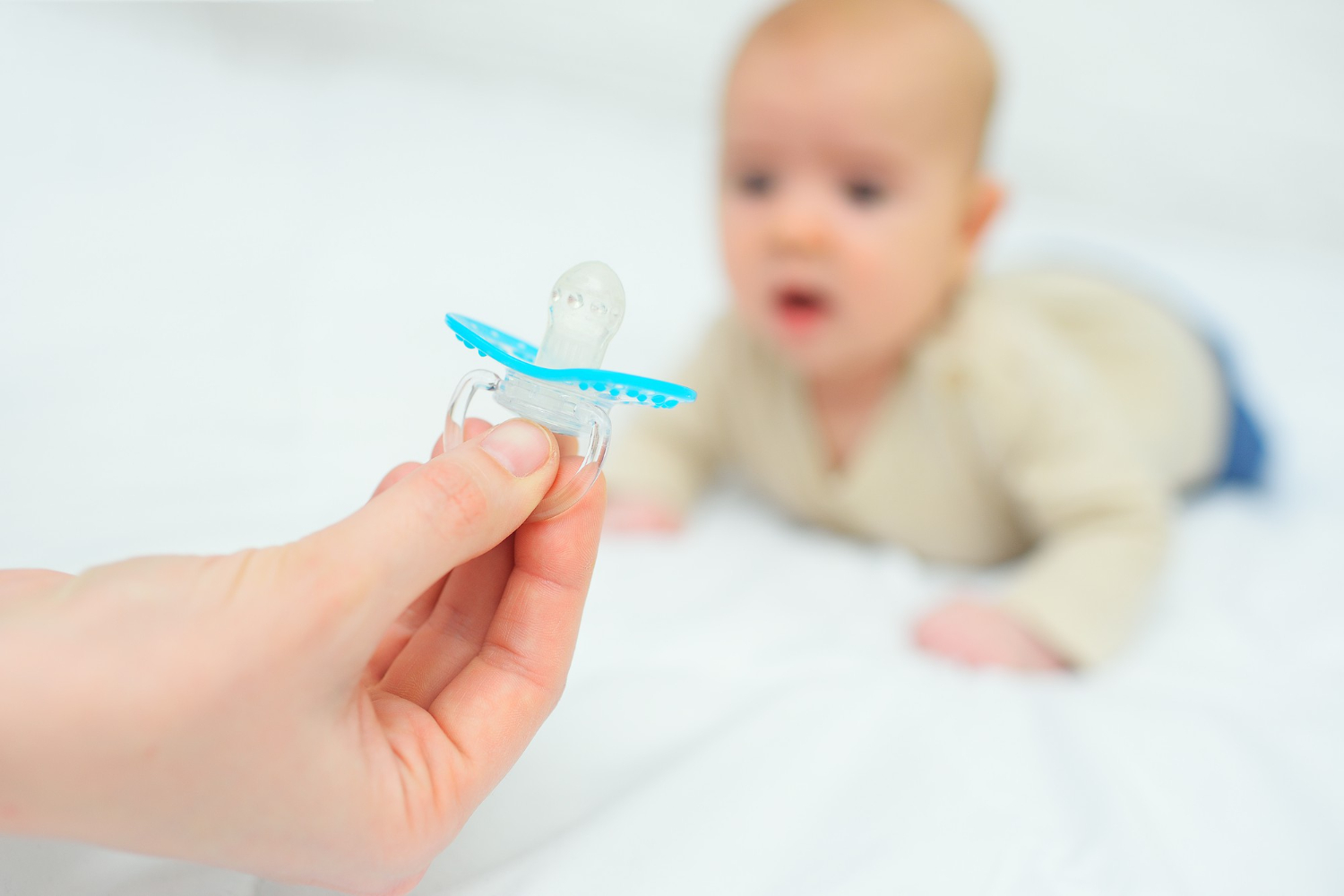The infant’s need for sucking is so fundamental that it begins even before birth. Instinctively, the baby seeks the comfort offered by breastfeeding and continues to pursue it through the use of a pacifier or their thumb. In the early stages, a pacifier can meet genuine needs: it provides comfort, aids sleep, reduces stress, and serves as a transitional tool in new environments or experiences. However, its beneficial use is strictly limited to a specific age range. The longer its use is prolonged, the greater the risk of permanently affecting the development of the mouth and jaw, potentially leading to crooked teeth that are present directly from the use of pacifier.
When the pacifier causes deformities
Excessive use of a pacifier – especially beyond 2.5 to 3 years – can cause certain dental and jaw deformities. This is because the facial bones are extremely malleable during the first years of life. Therefore, repeated pressure, such as that exerted by a pacifier on the palate or teeth, affects their normal formation.
Some of the most serious and frequently observed problems are:
- Anterior open bite (open occlusion): The front teeth of the upper and lower jaw do not meet when the child closes their mouth, leaving a noticeable gap. This affects both the aesthetics and the functionality of the mouth, such as speech articulation and chewing.
- Abnormal protrusion of upper teeth (overjet): The front teeth of the upper jaw “jut out” forward, making them more vulnerable to injury and altering the child’s facial profile.
- Palatal narrowing: The pressure of the pacifier on the palate leads to a high and narrow arch, resulting in teeth erupting crookedly or lacking adequate space to emerge.
- Speech difficulties: When the pacifier is frequently in the mouth, the tongue does not rest properly against the roof of the mouth. This can affect articulation and lead to difficulties in producing certain speech sounds.
It is worth noting that these problems are not just aesthetic. They affect speech, eating, breathing and generally the daily functioning of the mouth. If not treated in time, the deformities become more pronounced and therefore their treatment is more demanding and long-term.
When do changes like crooked teeth from the pacifier become permanent
The human body—especially a child’s—has a remarkable ability to self-correct, up to a point. If pacifier use stops before the age of 2.5 to 3 years, many of the initial issues are reversible. However, after the age of 4, the likelihood of spontaneous correction drops significantly. From that point onward, the need for orthodontic treatment (often involving removable or fixed appliances) becomes almost certain. In children who continue to use a pacifier or suck their thumb beyond the age of 5, orthodontic problems are usually inevitable.
What to expect as parents regarding orthodontic treatment
If you notice that your child is experiencing bite issues or protrusion of the front teeth, an early visit to a pediatric dentist or orthodontist is crucial. Between the ages of 4 and 7, special orthodontic appliances can be used to guide jaw development and prevent or correct mild misalignments. In older children, full orthodontic treatment is more likely to be needed, using metal braces, ceramic braces, or even removable appliances such as Invisalign clear aligners.
The duration of treatment depends on the severity of the deformity and the age at which orthodontic treatment begins. The earlier crooked teeth or other problems from the pacifier are detected, the milder and shorter the treatment.
Why a pacifier is better than finger sucking
Although both habits negatively affect oral development, the pacifier has one key advantage: it can be removed. The thumb is always available, and thumb-sucking is harder to control—mainly because children tend to suck their thumb when they are alone, without any social oversight. A pacifier can be “forgotten” or replaced, and with proper guidance, most children give it up more easily.
Don’t underestimate changes like crooked teeth from pacifier use
Any sign of misalignment of the teeth or jaws should not be ignored. Early observation by a pediatric dentist or an orthodontist can prevent the need for more extensive treatments in the future. Prevention in orthodontics is much easier (and cheaper) than treatment.
In general, a pacifier may seem like a simple object, but it has the power to define your child’s mouth anatomy and smile. When used in moderation and stopped in time, it is not a problem. However, when it becomes a daily addiction after the first few years, the consequences can be significant and difficult to reverse.
Don’t wait to see visibly crooked teeth from pacifier use before taking action. Prevention, observation, and expert guidance are the most effective tools at your disposal. However, if the problem does become established, solutions are available. Invisalign Orthodontist in Athens and Koropi Dr. Angeliki Nikolopoulou approaches every orthodontic issue holistically, precisely, and effectively.

